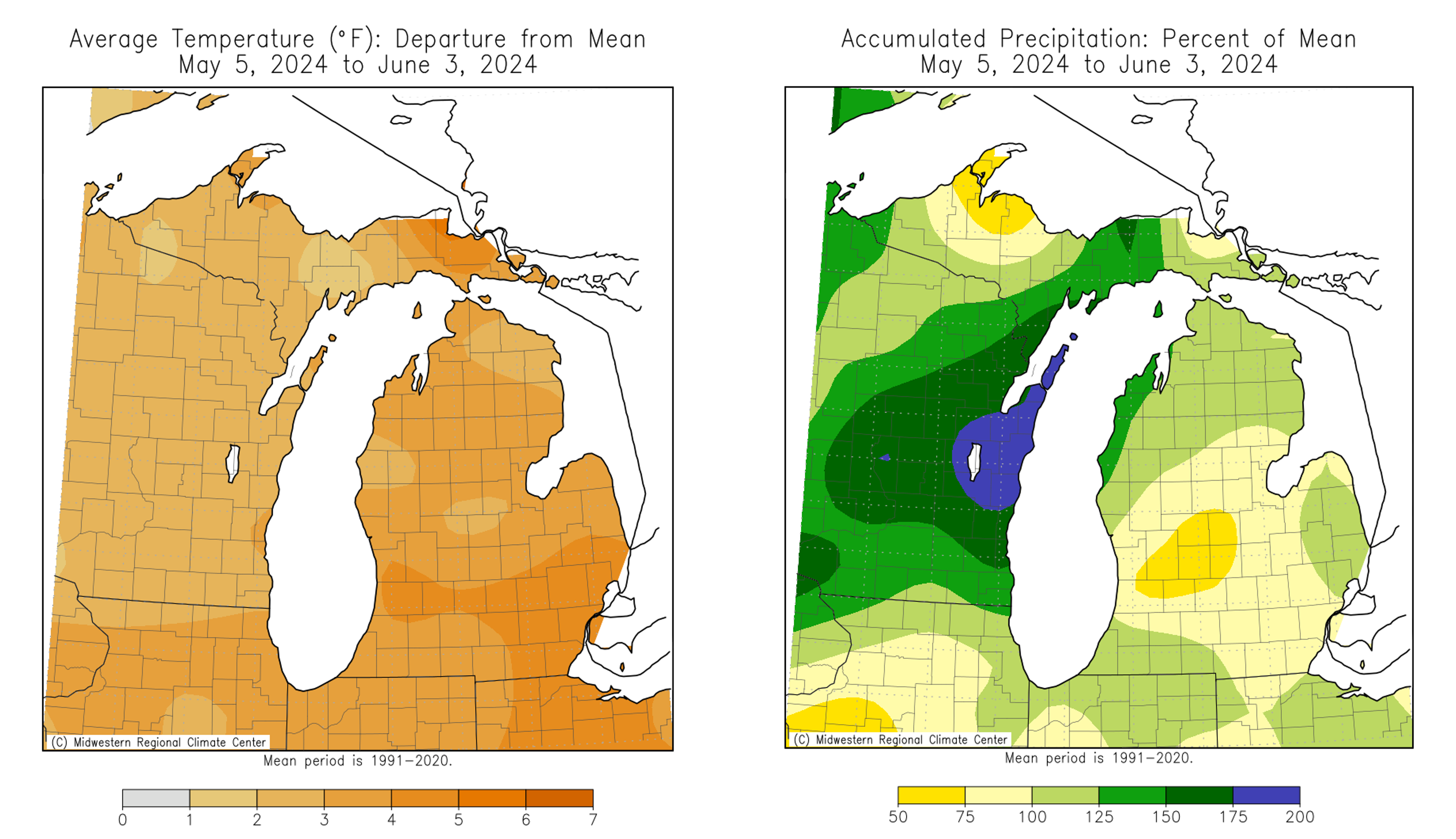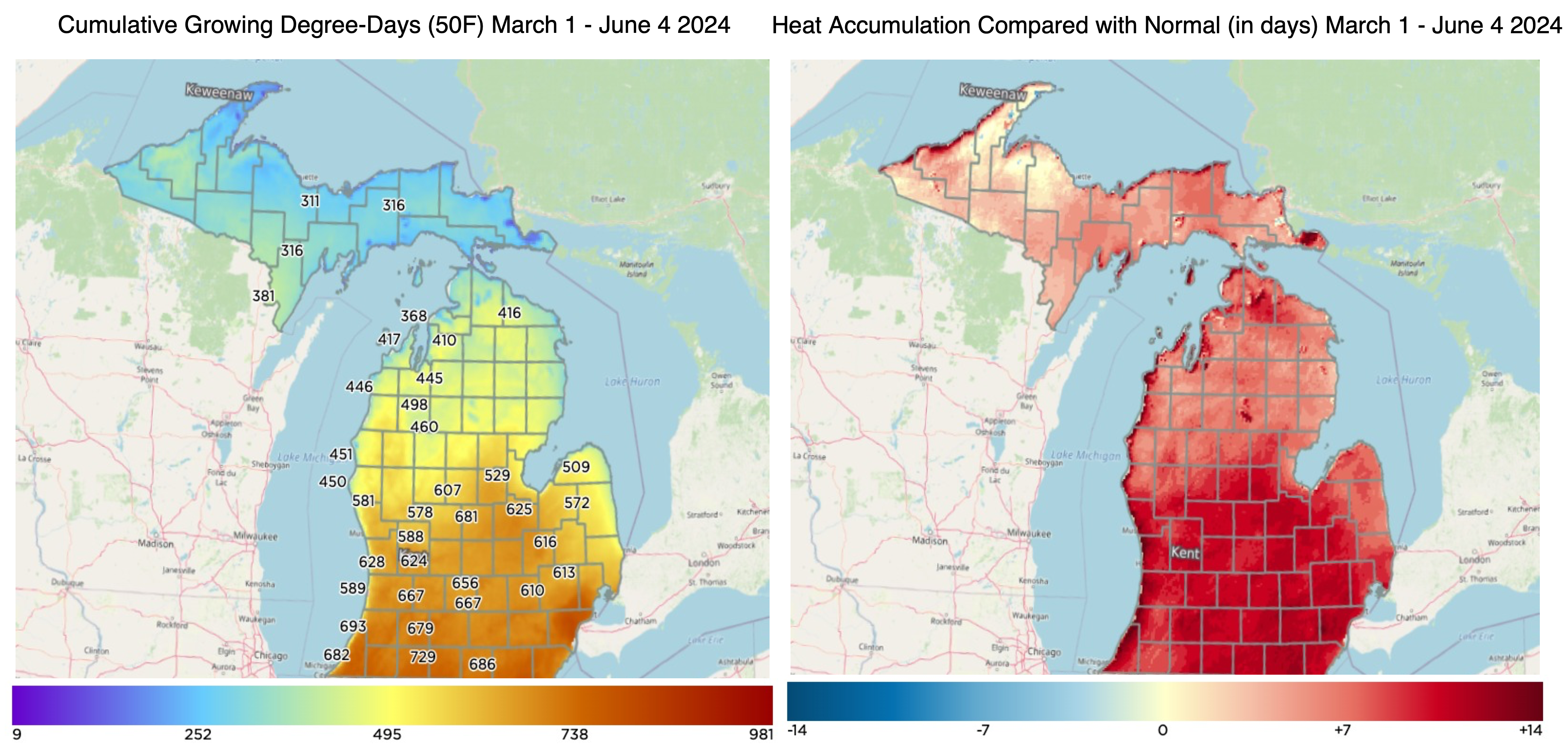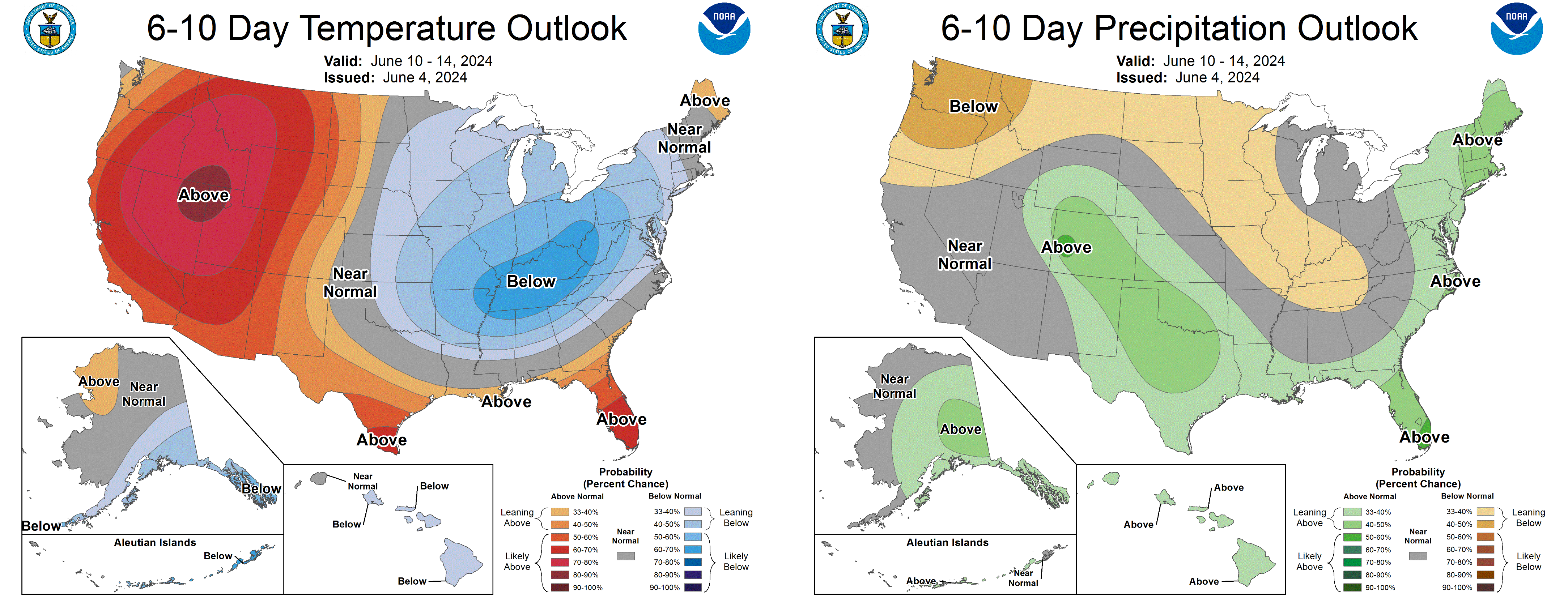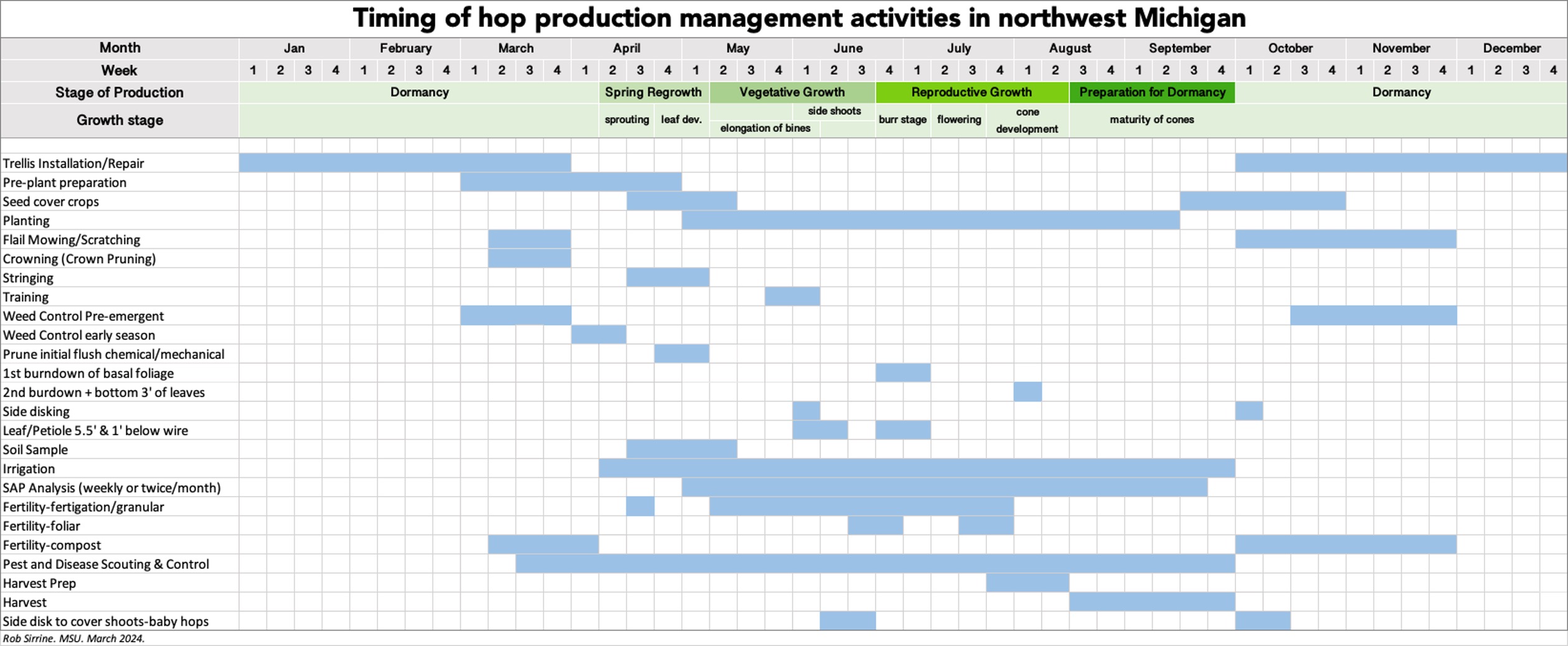Michigan hop crop report week of June 6, 2024
Hops are ahead of schedule, but a short cool down is on the horizon.

Weather review
Temperatures during March through May were higher than average across Michigan. Although, over the last week temperatures have been closer to normal. Precipitation in early March through the end of May has been variable across the state with slightly above average accumulation in the eastern Upper Peninsula, northern and southwest Michigan and below average accumulation across central Michigan. Over the last week, the trend has continued with greater than average precipitation for most areas of the northern Lower Peninsula and the Thumb and less than average precipitation in the western Upper Peninsula and south-central Michigan.

In terms of growing degree-day (GDD) accumulation, most areas of the state are still several days ahead of average.

Looking ahead
Medium range guidance suggests cooler than normal temperatures over the next week prior to a return to above average temperatures the last two weeks of June. The 6–10 day precipitation outlook suggests near normal precipitation.

See the most recent Michigan State University agriculture weather forecast.
Stage of production/physiology
Hops across Michigan are in Principal Growth Stage 1: Leaf Development (from re-growth after burn back) and entering Growth Stage 2: Formation of Side Shoots and 3: Elongation of Bines depending upon growing location.

In the field
Across Michigan, hops have been trained and are climbing their way up the coir. Growers are actively fertilizing, irrigating and applying plant protection products for disease control. Leafhoppers that came in with the first storms out of the south have been controlled. Plant growth is about a week ahead of normal depending on the location around the state.

For pest information, please see the Michigan hop pest report for June 6, 2024.
Sincere thanks to the Michigan hop producers who provided timely input for the Michigan Hop Crop Report.
Stay connected!
For more information on hop production practices, please sign up for the hop MSU Extension Newsletter, the FREE MSU Hop Chat Series and continue to visit Michigan State University Extension’s Hops webpage or the MSU Hops News Facebook.
If you are unsure of what is causing symptoms in the field, you can submit a sample to MSU Plant & Pest Diagnostics. Visit the webpage for specific information about how to collect, package, ship and image plant samples for diagnosis. If you have any doubt about what or how to collect a good sample, please contact the lab at 517-432-0988 or pestid@msu.edu.
Become a licensed pesticide applicator
All growers utilizing pesticide can benefit from getting their license, even if not legally required. Understanding pesticides and the associated regulations can help growers protect themselves, others, and the environment. Michigan pesticide applicator licenses are administered by the Michigan Department of Agriculture and Rural Development. You can read all about the process by visiting the Pesticide FAQ webpage. Michigan State University offers a number of resources to assist people pursuing their license, including an online study/continuing ed course and study manuals.
This work is supported by the Crop Protection and Pest Management Program [grant no 2021- 70006-35450] from the USDA National Institute of Food and Agriculture and the North Central IPM Center. Any opinions, findings, conclusions or recommendations expressed in this publication are those of the author(s) and do not necessarily reflect the view of the U.S. Department of Agriculture.



 Print
Print Email
Email
